by Bruce Wells | Oct 7, 2024 | This Week in Petroleum History
October 7, 1859 – First U.S. Oil Well catches Fire –
The wooden derrick and engine house of America’s first oil well erupted in flames along Oil Creek at Titusville, Pennsylvania. The well had been completed the previous August by Edwin L. Drake for George Bissell and the Seneca Oil Company of New Haven, Connecticut. Working with driller William “Uncle Billy” Smith, Drake used steam-powered cable-tool technology.
The first U.S. oil well fire began when Uncle Billy inspected a vat of oil with an open lamp. When the lamp’s flame set gases alight, the conflagration consumed the derrick, the stored oil, and the driller’s home. Drake and Seneca Oil Company would quickly rebuild at the already famous well site.
Learn more in First Oil Well Fire.

October 8, 1915 – Elk Basin oilfield discovered in Wyoming
An exploratory well drilled in a remote Wyoming valley opened the giant Elk Basin oilfield. Completed by the Midwest Refining Company near the Montana border, the wildcat well produced 150 barrels of high-grade “light oil” a day. The oil needed little refining to provide quality lubricants.

“Gusher coming in, south rim of the Elk Basin field, 1917.” Photo courtesy American Heritage Center, University of Wyoming.
Geologist George Ketchum first recognized the potential of the basin as a source of oil deposits. Ketchum had explored the remote area in 1906 with C.A. Fisher while farming near Cowley, Wyoming. The Elk Basin extended from Carbon County, Montana, into northeastern Park County, Wyoming.
Fisher was the first geologist to map sections of the Bighorn Basin southeast of Cody, Wyoming, where oil seeps had been found as early as 1883. The Wyoming oilfield discovery in unproved territory attracted new ventures like Elk Basin United Oil Company, investors, and oilfield service companies.
Learn more in First Wyoming Oil Wells.

October 8, 1923 – First International Petroleum Exposition and Congress
Five thousand visitors attended the rainy opening day of the first International Petroleum Exposition and Congress in downtown Tulsa, an event that would return for almost six decades.
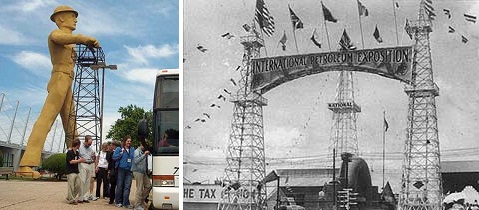
Although still a tourist attraction, the 76-foot-tall Golden Driller arrived decades after Tulsa’s first International Petroleum Exposition in 1923.
With annual attendance growing to more than 120,000, Mid-Continent Supply Company of Fort Worth introduced the original Golden Driller of Tulsa at the expo in 1953. Economic shocks beginning with the 1973 OPEC oil embargo depressed the industry and after 57 years, the International Petroleum Exposition ended in 1979.
October 9, 1999 – Converted Offshore Platform launches Rocket
Sea Launch, a Boeing-led consortium of companies from the United States, Russia, Ukraine and Norway, launched its first commercial rocket using the Ocean Odyssey, a modified semi-submersible drilling platform. After a demonstration flight in March, a Russian Zenit-3SL rocket carried a DirecTV satellite to geostationary orbit.
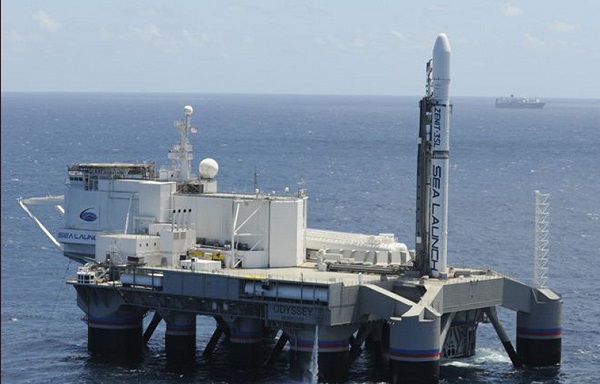
Ocean Odyssey, a modified semi-submersible drilling platform, became the world’s first floating equatorial launch pad in 1999. Photo courtesy Sea Launch.
In 1988, the former drilling platform had been used by Atlantic Richfield Company (ARCO) for North Sea explorations. The Ocean Odyssey made 36 more rocket launches until 2014, when the consortium ended after Russia illegally annexed Ukraine’s Crimean peninsula.
Learn more in Offshore Rocket Launcher.

October 10, 1865 – Oil Pipeline constructed in Pennsylvania
A two-inch iron pipeline began transporting oil five miles through hilly terrain from a well at booming Pithole, Pennsylvania, to the Miller Farm Railroad Station at Oil Creek. With their livelihoods threatened, teamsters attempted to sabotage the pipeline, until armed guards intervened. A second oil pipeline would begin operating in December.
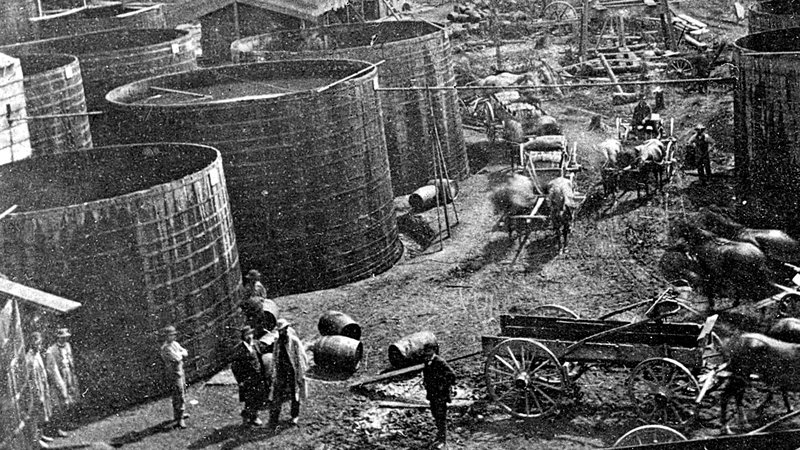
Oil tanks at the boom town of Pithole, Pennsylvania, where Samuel Van Syckel built a five-mile pipeline in 1865. Photo courtesy Drake Well Museum.
Built by Samuel Van Syckel, who had formed the Oil Transportation Association, the pipeline used 15-foot welded joints. Three 10-horsepower Reed and Cogswell steam pumps pushed the oil at a rate of 81 barrels per hour. With up to 2,000 barrels of oil arriving daily at the terminal, more storage tanks were soon added. The pipeline transported the equivalent of 300 teamster wagons working for 10 hours.
“The day that the Van Syckel pipeline began to run oil a revolution began in the business,” proclaimed Ida Tarbell in her 1904 History of the Standard Oil Company. “After the Drake well, it is the most important event in the history of the Oil Regions.”
October 13, 1917 – U.S. Oil & Gas Association founded
The United States Oil & Gas Association was founded as the Mid-Continent Oil & Gas Association in Tulsa, Oklahoma, six months after the United States entered World War I. Independent producers Frank Phillips, E.W. Marland, Bill Skelly, Robert Kerr and others established the association to help increase petroleum supplies for the Allies. In 1919, the association formed an Oklahoma-Kansas Division, now the Petroleum Alliance of Oklahoma.

October 13, 1954 – First Arizona Gas Well
After decades of searching for oil, Arizona became the 30th petroleum-producing state when Shell Oil Company completed a natural gas well one mile south of the Utah border on Apache County’s Navajo Indian Reservation. The East Boundary Butte No. 2 well indicated gas production of about 3 million cubic feet per day from depths between 4,540 feet to 4,690 feet, but just a few barrels of oil a day.
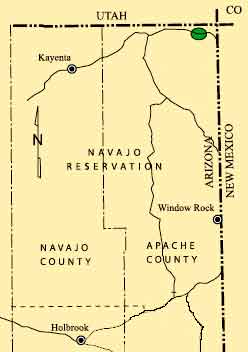
Arizona produces oil only from Apache County.
A rancher had reported finding natural oil seeps in central Arizona in the late 1890s, and by 1902, a part-time prospector from Pennsylvania, Joseph Heslet, began a lengthy exploration effort that ended in 1916 after finding traces of oil.
Arizona’s oil production declined after 2015, occasionally reaching 1,000 barrels of crude oil per month. There were no significant proven reserves by 2023, and the state’s few oil wells produced only about 6,000 barrels of oil, according to the Energy Information Administration (EIA).
Learn more in First Arizona Oil and Gas Wells.
_______________________
Recommended Reading: Myth, Legend, Reality: Edwin Laurentine Drake and the Early Oil Industry (2009); Black Gold, Patterns in the Development of Wyoming’s Oil Industry (1997); Tulsa Where the Streets Were Paved With Gold – Images of America
(2009); Black Gold, Patterns in the Development of Wyoming’s Oil Industry (1997); Tulsa Where the Streets Were Paved With Gold – Images of America (2000); Offshore Pioneers: Brown & Root and the History of Offshore Oil and Gas
(2000); Offshore Pioneers: Brown & Root and the History of Offshore Oil and Gas (1997); Western Pennsylvania’s Oil Heritage
(1997); Western Pennsylvania’s Oil Heritage (2008); Oil and Gas Pipeline Fundamentals
(2008); Oil and Gas Pipeline Fundamentals (1993); Arizona Rocks & Minerals: A Field Guide to the Grand Canyon State
(1993); Arizona Rocks & Minerals: A Field Guide to the Grand Canyon State (2010). Your Amazon purchase benefits the American Oil & Gas Historical Society. As an Amazon Associate, AOGHS earns a commission from qualifying purchases.
(2010). Your Amazon purchase benefits the American Oil & Gas Historical Society. As an Amazon Associate, AOGHS earns a commission from qualifying purchases.
_______________________
The American Oil & Gas Historical Society (AOGHS) preserves U.S. petroleum history. Please become an AOGHS annual supporter and help maintain this energy education website and expand historical research. For more information, contact bawells@aoghs.org. Copyright © 2024 Bruce A. Wells. All rights reserved.
by Bruce Wells | Oct 3, 2024 | Petroleum Pioneers
Navajo Nation wells produced oil, natural gas, and helium in the 1950s.
Reports of natural seeps in the late 1890s encouraged exploration for commercial quantities of oil more than a decade before Arizona statehood in 1912. Finding a productive oilfield would prove elusive.
At the start of the 20th century, Joseph Heslet, a part-time prospector from Pennsylvania, drilled several unsuccessful wells that showed traces of oil. His efforts caught the attention of other exploration companies, including several that arrived from the 1901 giant oilfield discovery at Spindletop Hill in Texas.
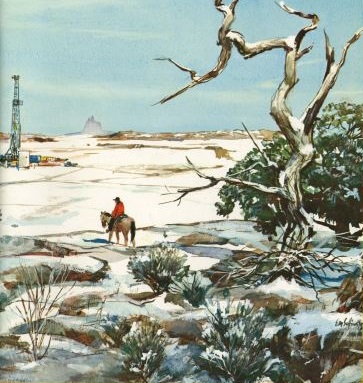
The cover of a 1961 Arizona Oil and Gas Conservation Commission report featured a painting by E.M. “Buck” Schiwetz. Image courtesy Humble Oil and Refining Company.
A 1905 wildcat well drilled in the Chino Valley, 20 miles north of Prescott, reached a depth of 2,000 feet before being abandoned as an expensive failure. Another well drilled one year later in Graham County was abandoned at a depth of 1,400 feet.
More exploration attempts followed, most lacking knowledge of the emerging science of petroleum geology. The result would be five decades of drilling unsuccessful wells — Arizona dry holes.

“A series of speculative ventures and explorations in oil drilling occurred over the ensuing decades, followed by the discovery of helium, an industrial gas that has become a major industry in the state,” noted a 2004 article at Tucson.com.
Better known for abundant copper deposits, it was the search for petroleum that led to helium discoveries in Arizona.
Although normally low, the concentration of helium in natural gas has been measured from 0.01 percent to 7 percent. Helium content would be enough to confuse residents of Dexter, Kansas, in 1903 when a natural gas discovery well would not burn (learn more in Kansas “Wind Gas ” Well).
In Arizona, Kipling Petroleum Company discovered helium 20 miles east of Holbrook in Navajo County in 1950, but “commercial production of helium in Arizona began in 1961 with the state’s first helium extraction plant producing 9 billion cubic feet of gas over 15 years,” the article explained.
Gas in 1954, Oil in 1959
Arizona became the 30th petroleum-producing state on October 13, 1954, with a natural gas well.
Shell Oil Company completed the state’s first commercial well south of the Utah border on Apache County’s Navajo Indian Reservation. Natural gas flowed after drilling to a depth of 4,540 feet.
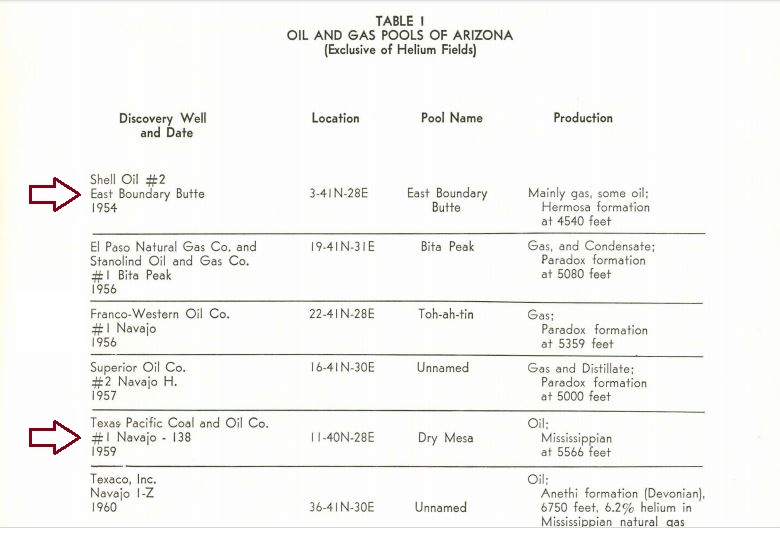
Arizona’s first natural gas well in 1954 (top) and first significant oil well in 1959. Image from “Oil, Gas and Helium in Arizona, Its Occurrence and Potential.”
“The first producing well in Arizona was drilled by Shell Oil Company in 1954 on a surface structure known as the East Boundary Butte anticline,” proclaimed a special report by the Arizona Oil and Gas Conservation Commission. The well found natural gas and a small amount of oil.

Shell Oil’s East Boundary Butte No. 2 well indicated gas production of 3,150 thousand cubic feet per day; daily oil production was 3.6 barrels of oil (plus 8.4 barrels of salt water per day) from part of the Pennsylvanian geologic formation, the Hermosa, according to the commission’s report.
The 1961 report, Oil, Gas and Helium in Arizona, Its Occurrence and Potential was published by the Arizona Development Board to encourage further exploration. The cover featured a painting by artist Edward “Buck” Schiwetz (1898-1984), courtesy Humble Oil and Refining Company.
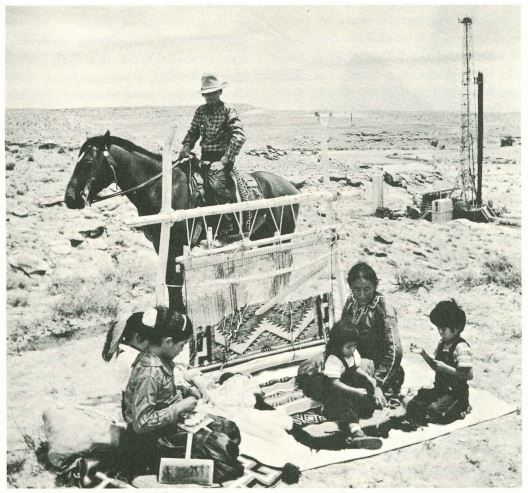
Well site on the Navajo Reservation in Apache County, Arizona. The 16-million-acre reservation extends into New Mexico and Utah. Circa 1965 photo courtesy Shell Oil Co.
One candidate for the first Arizona oil well, according to the report, was Humble Oil Company’s No. 1 E Navajo well, drilled in 1958 near the Shell Oil natural gas well. Although initial oil production was from the same formation (Hermosa), “subsequent production showed increasing gas,” and by 1961 it was considered a natural gas well.
“Additional drilling on this structure resulted in completion of three more wells producing mostly gas with some distillate and oil,” noted Lee Feemster of the Texas Pacific Coal and Oil Company.
“Oil and gas shows were encountered in the Hermosa, Mississippian, and Devonian but to date the production is confined to the Hermosa,” Feemster added.
Learn about the earliest oilfield discoveries in other petroleum-producing states in First Oil Discoveries.
Seismic Anomaly
In 1956, the Franco Western Oil Company drilled a well based on a seismic anomaly in the Mississippian formation and found more natural gas. A well completed a year later by Superior Oil Company also produced significant amounts of gas from the Hermosa geologic zone.

“Encouraging shows of oil and gas were recorded in the Mississippian and Devonian in this test, Feemster noted in the commission report. It was his company, Texas Pacific Coal and Oil, that drilled a test well that finally found commercial quantities of oil in Arizona in 1959.
Founded in 1888, Texas Pacific Coal and Oil Company had established the mining town of Thurber, Texas, and by the early 1900s provided almost half of the coal supply for Texas. In 1917, the company drilled the state’s famous McCleskey No. 1 “Roaring Ranger” well in Eastland County.
“The People’s Field”
Texas Pacific Coal and Oil’s 1959 first Arizona oil discovery, the Navajo No. 1 well, was completed in the extreme northeastern part of the state.
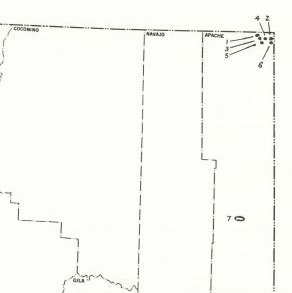
Arizona’s oil and natural gas fields are in its northeast corner: (I) East Boundary Butte; (2) Bita Peak; (3) Toh-ah-tin; (4) Unnamed Paradox gas and distillate; (5) Dry Mesa; (6) Unnamed Devonian oil; (7) Pinta dome helium area.
The Navajo No. 1 well produced 240 barrels of oil per day at a depth of 5,566 feet in the Mississippian geologic formation, according to Feemster, who added, “The nearest Mississippian production at that time was in the Big Flat field more than 100 miles north in Utah.”
In 1967, the Kerr-McGee Company’s Navajo No. 1 well revealed an oil-producing geologic anticline about 4,000 feet deep. That well joined the others producing on the Navajo Reservation in Apache County (reservation land includes 16 million acres in Arizona, New Mexico, and Utah).
By 2012, the Navajo Reservation’s Dineh-bi-Keyah — “The People’s Field” — would produce more than 18 million barrels of oil. Recognizing the importance of advancements in horizontal drilling technology, in 2013 the Arizona Geological Survey issued a report, Potential Targets for Shale-Oil and Shale-Gas Exploration in Arizona.

By 2016, Arizona had 32 operating oil and natural gas wells, according to the state commission. Of the 1,129 wells drilled in the state since 1954, almost 90 percent were dry holes (2014 data). Apache County in the northeast corner of the state has remained the only petroleum-producing county.
By 2023, the state had “no significant proved crude oil reserves, and the state’s few oil wells produced only about 6,000 barrels of crude oil in 2023,” according to the Energy Information Administration (EIA). Arizona produces more copper than any other state.
_______________________
Recommended Reading: Arizona Rocks & Minerals: A Field Guide to the Grand Canyon State (2010); Helium: Its Creation, Discovery, History, Production, Properties and Uses (2022). Your Amazon purchase benefits the American Oil & Gas Historical Society. As an Amazon Associate, AOGHS earns a commission from qualifying purchases.
(2010); Helium: Its Creation, Discovery, History, Production, Properties and Uses (2022). Your Amazon purchase benefits the American Oil & Gas Historical Society. As an Amazon Associate, AOGHS earns a commission from qualifying purchases.
_______________________
The American Oil & Gas Historical Society (AOGHS) preserves U.S. petroleum history. Please become an AOGHS annual supporter and help maintain this energy education website and expand historical research. For more information, contact bawells@aoghs.org. Copyright © 2024 Bruce A. Wells. All rights reserved.
Citation Information: Article Title – “First Arizona Oil Well.” Authors: B.A. Wells and K.L. Wells. Website Name: American Oil & Gas Historical Society. URL: https://aoghs.org/petroleum-pioneers/first-arizona-oil-well. Last Updated: October 3, 2024. Original Published Date: October 9, 2018.




(2009); Black Gold, Patterns in the Development of Wyoming’s Oil Industry (1997); Tulsa Where the Streets Were Paved With Gold – Images of America
(2000); Offshore Pioneers: Brown & Root and the History of Offshore Oil and Gas
(1997); Western Pennsylvania’s Oil Heritage
(2008); Oil and Gas Pipeline Fundamentals
(1993); Arizona Rocks & Minerals: A Field Guide to the Grand Canyon State
(2010). Your Amazon purchase benefits the American Oil & Gas Historical Society. As an Amazon Associate, AOGHS earns a commission from qualifying purchases.








